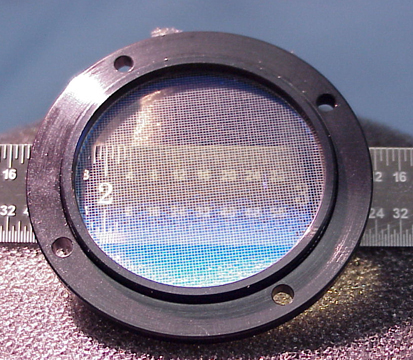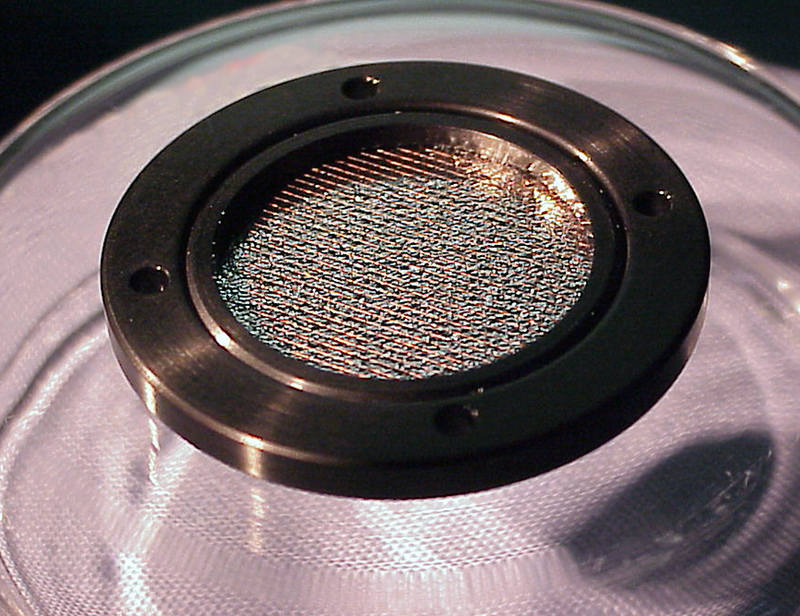Robust, Thin Optical Films for Extreme Environments
Originating Technology/NASA Contribution
The environment of space presents scientists and engineers with the challenges of a harsh, unforgiving laboratory in which to conduct their scientific research. Solar astronomy and X-ray astronomy are two of the more challenging areas into which NASA scientists delve, as the optics for this high-tech work must be extremely sensitive and accurate, yet also be able to withstand the battering dished out by radiation, extreme temperature swings, and flying debris. Recent NASA work on this rugged equipment has led to the development of a strong, thin film for both space and laboratory use.
Partnership
Through a Small Business Innovation Research (SBIR) contract with Goddard Space Flight Center, Luxel Corporation, of Friday Harbor, Washington, developed key materials that will help NASA researchers as they explore the unforgiving environment of space. With NASA’s assistance, the company developed a novel manufacturing process for ultra-thin films that have application in enhancing X-ray and extreme ultraviolet (EUV) filter technology.
The films incorporate composite polymer support mesh with polyimide or metallic ultra-thin films, which makes them stronger and more durable, while still maintaining their optical filtering integrity. The mesh was specially characterized for adhesion, mechanical and vibration strength, X-ray transmittance, and throughput gain.
This is the fourth successful NASA SBIR contract that Luxel has completed in this area, with others including “Applications of Thin Polyimide Films to X-ray Optics,” “High Throughput Thin Foil Filters with Enhanced Durability for the Soft X-ray and EUV Regions,” and “Polyimide X-ray Filters Optimized for Strength at Cryogenic Temperatures.”
While NASA will find use for these filtering films in a variety of optical and plasma research venues during future missions, Luxel’s customers have been finding uses for this new technology in government and commercial laboratories.
Product Outcome
In the 30 years that Luxel has been in operation, it has pioneered development of new filter materials and techniques for the fabrication of the filtering films, and with its years of industry experience, it can produce filters and windows larger and stronger than previously thought possible.
Its filters are cutting edge. Many of the new Luxel designs are allowing researchers to better discriminate regions of the electromagnetic spectrum, and its filters routinely demonstrate remarkable strength for their size. Many of them are able to withstand spacecraft launch, pressure differentials, and maintain gas cell integrity. Luxel delivers some of the highest quality foil filters available, produced from over 70 different materials, compounds, and organics, supplied on both standard and custom frames. The polyimide and metallic foil filters that were advanced under the NASA contracts are now part of Luxel’s commercial offerings and being used by a plethora of researchers.
The new filters, combined with Luxel’s new manufacturing process—a late discovery in the SBIR work that resulted in a radical new method for producing composite polymer supports using photolithography and polyimide—are a viable option for many of Luxel’s customers. This new manufacturing capability is a boon to customers, as it allows Luxel to provide large quantities of the ultra-thin films.
The researchers also increased the performance of the films. They discovered that by incorporating either high-modulus polymer fibers or tungsten filaments into a filter’s construction, the average burst strength increases by 200-percent more than that of the baseline electroformed nickel mesh; and the ultra-fine diameter filaments used in filter construction have the ability to reduce obscuration effects by 10 to 15 percent over those same existing mesh systems.
These filters fabricated for X-ray and EUV applications using polymer composite support mesh are highly transparent in the high-energy wavelengths, even in extreme conditions. They are hardy enough to survive rough handling, which makes them ideal for a variety of research applications.

Luxel Corporation is a top supplier of thin foil filters. The company supports customer requirements for X-ray and extreme ultraviolet (EUV) research programs.

The company's work with NASA under a Small Business Innovation Research (SBIR) contract helped to create key filtering materials for protecting optics in harsh environments. These materials are now helping researchers everywhere.













